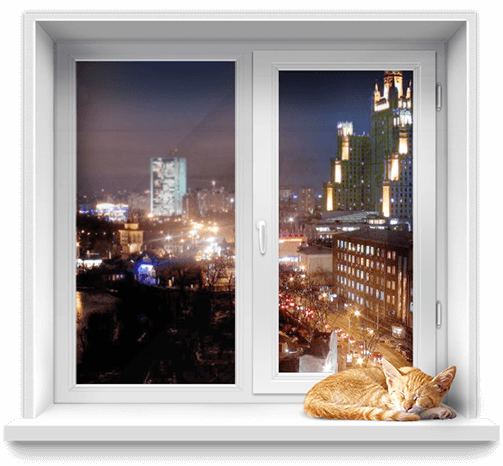
News
15/06/17
Noise protection as a main feature of PVC windows.
Great soundprofiing is one of the main characteristics of plastic windows, which promotes growth of their popularity compared to ones made of wood. Noise pollution - the scourge of modern cities, so manufacturers of PVC windows are continually seeking new solutions that will improve the sound insulation of windows.
The human ear is able to perceive sounds that are located in the range from 16 Hz to 20 kHz and has a maximum sensitivity to sounds with a frequency from 400 Hz to 3 kHz. The sound intensity is commonly measured in decibels. The lower threshold of audibility which is perceived by the person as a complete silence is a null value for this parameter. The noise of the street can have a different intensity, depending on its human and transport flows and the availability of various enterprises. Its standard range of 40 to 80 decibels.
The speed of sound depends on the environment.Plastic windows dampen the noise during its passage through the glass and the interlayer, in between them. Wavelength change while overcoming the glass barriers, and changes again after distribution in the air gap and passing through the second glass.
That is why two-chabered windows provide better protection from noise than single-chamber. Windows with different width of cameras and glasses of different thickness cope with it the best.
An important role in noise protection ability plays a tightness of adjustment of sashes to frame. In practice, the quality of the the sound insulation properties of the window depend on tightness even more than on the number of chambers.
Thinking about what level of sound proofing you need, don't overdo it. Improving the noise insulation by increasing the mass of the window is not the best solution. Double-glass, heavy profile system, improved sealing leads to a serious overweight and higher cost of construction. Therefore, these windows should only be installed where it is a real necessity.

uPVC Windows and Doors in Egypt. Any color of turn, tilt and turn, tilt sliding, sliding, parallel sliding system, arched non standard PVC windows. Mosquito nets, roller and lower shutter, jalousie in double glass or triple glazing by Super Spacer technology. Painted and bend uPVC profile, stained glass. Painting and bending PVC profile WINSA Carina, Vela. Maintenance and Repairing
Eco House Joint Stock Company partner of Deceuninck Group | Copyright 2009-2025. All rights reserved.
E-mail: info@ecohouse-eg.com, tel.: +201212288828
Site www.ecohouse-eg.com is for informational purposes only and under no circumstances is not a public offer. For more information on the cost of materials, products and services, please contact the sales offices
